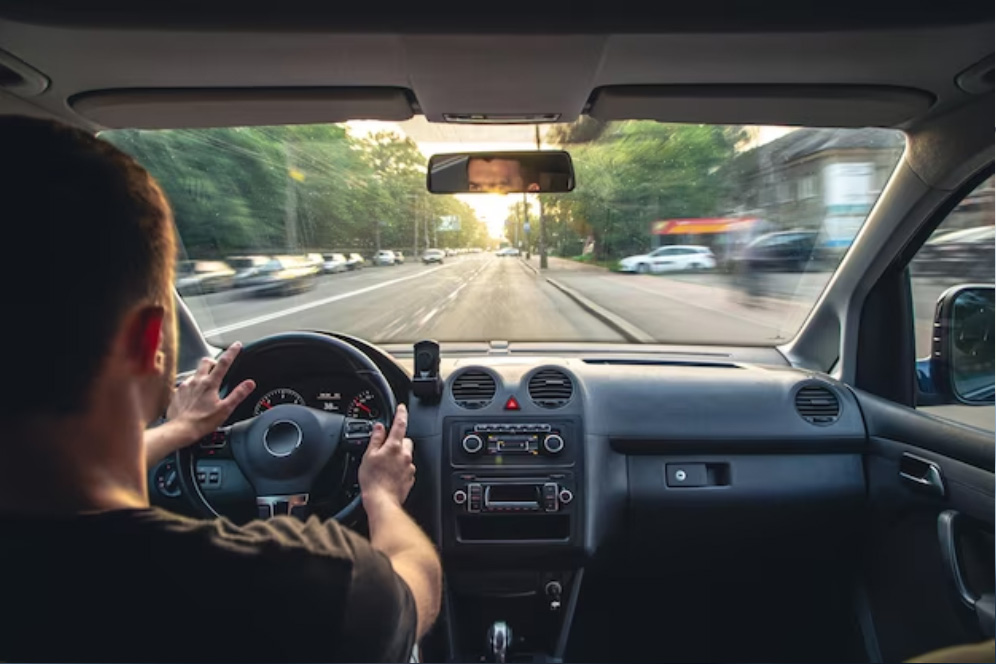
Are you feeling too sleepy to drive? You’re not alone Are you feeling too sleepy to drive? You’re not alone – millions of drivers battle drowsiness on a daily basis. But don’t worry – this article will give you the tips you need to stay awake and alert on the road.
Keep reading to find out how to stay safe and avoid falling asleep at the wheel.
Get a good night’s sleep whenever possible.
Driving while sleepy can be dangerous, so it is important to get a good night\’s sleep whenever possible. As the official Drivewise™ driving school in Ontario, DIVISAsafely recommends that drivers should get at least seven hours of sleep per day in order to stay alert and focused while on the road. While getting proper rest can help prevent drowsy driving, there are also other behaviors drivers should adopt in order to stay awake and alert while behind the wheel.
The best defense against drowsy driving is to plan ahead rather than suddenly finding yourself too tired to drive. It is essential for drivers to assess their feelings as they approach their destination and calculate how long of a drive they can safely make in one trip. For long drives it’s especially smart to plan breaks along your route so you can stretch your legs or have a snack. Eating small snacks throughout your drive can help prevent feeling too sleepy as you continue on your journey but be sure to choose snacks that are easy on digestion like fruits or trail mix rather than heavier options like sandwiches or burgers which may make you feel tired after eating them.
Drivers can also take advantage of certain resources available from DIVISAsafely’s best driving schools in Ontario when preparing for a long road trip such as special courses offering tips and advice about how-to-stay alert levels during a drive. During longer trips try changing up the music every hour, opening windows for fresh air or having someone sit beside you and engage in conversation to keep you awake. Finally, if you start feeling sleepy pull over right away and find a comfortable spot to rest before continuing on with your drive again when you\’re feeling refreshed and with an awake mind set – because staying safe on the road comes first!
Eat a healthy meal before you hit the road.
Driving while fatigued can be a dangerous situation. In fact, it can be just as dangerous as driving under the influence of alcohol! To ensure your safety on the road, it\’s important to keep yourself awake and alert while behind the wheel.
One effective way to achieve this is to make sure you have a healthy meal before you hit the road. Eating food will give your body and brain energy that will help you stay awake for long periods of time. You should focus on whole foods such as lean proteins, complex carbohydrates, fresh fruits, and vegetables that are low in sugar. Stay away from processed and sugary snacks that can cause a “sugar crash” and leave you feeling even more tired.
It\’s also important to take regular breaks when traveling long distances. Make sure you stop at least every two hours for at least fifteen minutes so your body can recharge. You may consider taking a course at an accredited Drivisa driving school in Ontario as they specialize in safe driving education which should help reduce fatigue while driving. Also setting alarms on your phone may help remind yourself when it is time to get off the road and take breaks when possible. Staying hydrated with water throughout the day will also help keep energy levels up by keeping tiredness at bay during long trips on the road or highways during vacations or other drives from one place to another. Above all remember that rest is key for keeping yourself alert and awake during drives so plan accordingly for activities like taking naps for shorter time periods instead of oversleeping when necessary.

Drink plenty of water.
When it comes to staying alert while driving, it is important to drink plenty of water and keep hydrated. Dehydration can be a major factor in fatigue, which can lead to dangerous driving. A good rule of thumb is to drink 8 ounces of fluids every hour that you are behind the wheel — especially when embarking on long trips. Caffeine is also a known aid in combating fatigue, but don’t overdo it; if your body has an adverse reaction one cup too many can have severe consequences.
Be mindful of your surroundings and take regular breaks for meals and rest stops along the way. Taking photos or recordings with DashCAM devices or mobile phones may prove beneficial throughout longer journeys, as recording relevant evidence helps substantiate legal claims like the Drivisa system. Planning your route ahead of time make sure that you know where you’re going and what potential hazards may exist along the way; being aware of upcoming curve signs or roadblocks allows for more productive navigational decisions than blindly relying on GPS systems for directions.
Last but not least, make sure that you have someone to keep you company when driving long distances — regardless if it’s friends or family members — a truly engaged friend provides greater assistance than any safety system can ever offer!
Listen to upbeat music or a stimulating podcast while you’re driving.
Driving while you are tired can be dangerous, but it is a common problem for many drivers. Staying alert and energized while on the road is important to ensure your own safety, as well as those around you. Listening to upbeat music or a stimulating podcast while you’re driving can help keep you awake and alert behind the wheel. This activity not only provides an enjoyable distraction, it’s also great mental stimulation that will likely help keep your drive safe.
If you have to take a long drive in your G1 test or if you’re embarking on a trip to visit family, staying awake and focused is essential. Constant breaks are recommended on longer trips and make sure to avoid drinking caffeinated beverages too close to bedtime or when starting your journey as the effects may wear off sooner than expected due to fatigue. Fortunately, there are other strategies that can help safely stay alert while driving such as having plenty of snacks nearby or talking with passengers. If your trip requires more significant upgrades, engaging in a driving school in Ontario program may provide additional assistance in staying focused and alert in complex traffic situations beyond normal highway etiquette.
Staying awake behind the wheel isn’t always as easy as drinking an energy drink or chugging caffeine before hitting the road. It takes effort, self-control and discipline! By listening to upbeat music and podcasts while driving, taking regular breaks during longer trips, properly timing caffeinated beverages if needed, snacking throughout the journey\’s duration and enrolling into comprehensive driving lessons if needed are all effective routes of action that one could take when factoring in their own energy levels while they travel down the highway!
Open the windows to get some cold air on your face.
Driving while tired can significantly increase your chances of getting into an accident, which is why it is important to stay awake while behind the wheel. One way to do this is by opening your windows and letting some fresh air blow over your face for a few seconds. This sudden change in temperature will wake up any sleepiness that might be lingering and help you focus on the road. Also, make sure to keep your window open to the side where you are not exposed to traffic so that you can get a continuous flow of crisp air without having to concentrate too hard on any vehicles around you.
If cold air isn’t enough, try playing some upbeat music or keeping conversation with passengers in the car as these activities keep your mind occupied and alert while on long drives. If possible, make sure to also stop every once in a while take short breaks to recharge when necessary – spacing out rest stops throughout driving trips helps break up monotony and reenergizes both mind and body by allowing oxygen-rich blood into circulation peacefully away from traffic.
This is especially true if you’re participating in a Drivisa challenge! Make sure take full advantage of autoconfigs and rest stops when driving long distances or late at night so that you can increase productivity and drive safely at all times.
Sit up straight whenever possible.
Although it can be difficult to stay awake while driving, there are several strategies you can use to remain alert and vigilant behind the wheel. One of the most important things you can do is sit up straight whenever possible, as this helps open your airways and increase oxygen intake necessary for alertness. Keeping your back straight helps ensure that your gaze remains focused ahead on the road, which will help you avoid any unexpected obstacles while driving.
In addition to sitting up straight, consider shortening your trips and scheduling them around times when you generally feel more awake and alert. Additionally, organizing frequent stops throughout the journey will help break up monotonous tasks and allow for some activity-based activities that stimulate your senses, such as stretching or eating a healthy snack.
The Drivisa app measures different points of focus on the face using advanced machine learning algorithms so they can remind drivers to take control of their attention if they begin drifting off track – a feature that could enhance safety while on the road significantly.

If you’re driving for longer than two hours, take a break for at least 15 minutes.
For those who have to drive for an extended period of time, such as on long road trips, staying alert can be a challenge. Staying alert and awake while driving is essential for staying safe on the roads and avoiding crashes. Here are some tips to help you stay awake while driving:
If you’re going to be driving for more than two hours, take a break at least every two hours. Stopping your car and getting out of the car when taking a break will help increase your alertness and focus when you’re back on the road again. Taking a few minutes to walk around outside, or sitting in a park or somewhere with plenty of natural light can help restore focus as well as give your eyes something to look at other than pavement. If possible, try bringing someone along with you who can spell off driving duties every few hours or so.
It’s important to get plenty of sleep before heading out for a long drive so that you can remain alert throughout your journey. It might also be helpful to partake in short naps if needed during breaks from driving so that you have enough energy when it comes time to get back behind the wheel. Driving schools offer specialized courses such as Driving Lessons Toronto or G1 Tests Toronto that provide students with tips on how best drive safely and remain attentive during longer drives if further training is necessary.
Drivisa encourages all drivers to practice best safety practices like taking adequate breaks and getting proper rest before embarking on any kind of long drive—it could save lives!
conclusion
Staying awake while driving is an important part of car safety that all drivers should be aware of. Taking regular breaks, drinking energizing beverages, and avoiding caffeine before long drives can help to keep you alert and prevent dangerous drowsy driving.
If you\’re looking for tips on improving your driving skills, Drivisa Driving School in Ontario offers specialized driving lessons to help you sharpen your skills and prepare for the G1 road test.
No matter if you\’ve just passed your G1 test or have been on the roads for years safety while driving should always be your top priority. Avoiding fatigue and staying alert are important factors in reducing the risk of accidents on the road. By following these simple tips, you can stay safe and awake while behind the wheel with confidence that your drive will be a successful one.



